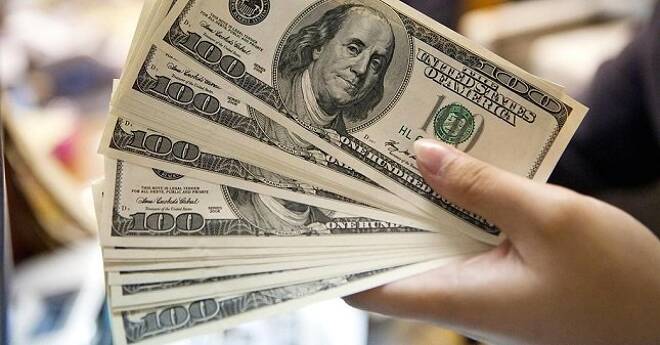Advertisement
Advertisement
The Dollar Bears Are Back After Taking a Break on Friday
By:
It’s a pretty quiet day on the macroeconomic calendar for the day ahead, with stats out of Eurozone this morning having been limited to Germany’s June
It’s a pretty quiet day on the macroeconomic calendar for the day ahead, with stats out of Eurozone this morning having been limited to Germany’s June industrial production figures and July housing price figures out of the UK.
A lack of data hasn’t deterred the markets from responding to Friday’s nonfarm payrolls, with the Dollar failing to garner further support through the Asian session, despite the better than expected numbers, the Dollar Spot Index hitting 93.319 before making a slight recovery ahead of the European open, with the Index down 0.11% at 93.436 at the time of the report.
If there are any Dollar bulls waiting for an opportunity to jump in, FOMC non-voting member Bullard and voting member Kashkari scheduled to speak later in the day are unlikely to be of much help, particularly Kashkari who is the most dovish of the doves since becoming a voting member this year.
For the Dollar bulls, it’s going to boil down to Wednesday’s 2nd quarter productivity figures and Friday’s inflation numbers for July, any hopes of a Dollar rebound hinged on a more hawkish sentiment towards FED monetary policy, with U.S wage growth continuing to be an issue for the FED and the markets.
Across the pond, today’s house price figures are unlikely to do too much damage to the pound as the markets look ahead to key data scheduled for release this week, including June trade data and manufacturing and industrial production figures. Forecasts are for the trade deficit to narrow in June and for production figures to recover from May’s disappointing numbers, though looking back at UK private sector PMI figures for May and June, there were no suggestions of an uptick in output, let alone increased export demand from April’s peak.
With the BoE signalling a hold through the remainder of this year and deep into next, any talk of rate hikes will certainly be on hold through the coming months and the pound will certainly see a sizeable fall should this week’s numbers disappoint, any hopes of the UK economy managing to tread water likely to evaporate.
The good news is that economic indicators out of the Eurozone continue to support a positive outlook for growth and the EUR is likely to continue becoming the market’s favourite through the 3rd quarter, something that the ECB and Draghi in particular will want to address, with the maturing asset purchasing program being something that the ECB can tinker with, or at least threaten to tinker with through to the end of the year, any hints of an extension the negative for the EUR.
This morning’s industrial production numbers out of Germany were disappointing, the EUR easing from intraday highs on the data, with tomorrow’s trade surplus forecasted to widen in June, which suggests momentum will likely be with the EUR ahead of key stats out of the U.S later in the week, despite today’s weak numbers.
On the geo-political front, it should be pretty quiet in the Oval office, with the U.S President moving out of the White House for a much talked about 17-day working holiday. There’s always Twitter though and, with the investigations into the U.S administration ongoing, anything can happen and that anything could just be another nail in the Dollar’s coffin.
At the time of the report, the EUR was up 0.09% at $1.1783, with the pound up 0.08% at $1.3050, a recovery in the Dollar from today’s losses expected through to FOMC member commentary, supported by Friday’s positive numbers.
About the Author
Bob Masonauthor
With over 28 years of experience in the financial industry, Bob has worked with various global rating agencies and multinational banks. Currently he is covering currencies, commodities, alternative asset classes and global equities, focusing mostly on European and Asian markets.
Advertisement
